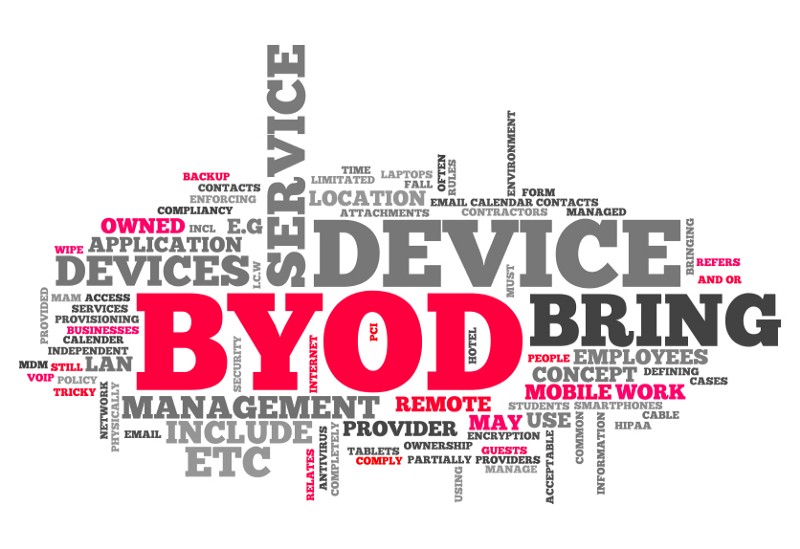Before you consider enabling BYOD at your enterprise
Bring your own device or BYOD is one of the cool buzz words in the IT industry today. It seems to be pretty simple and straight forward, allowing your employees to bring the device of their choice to work. There are two main benefits…
- Employees get to choose their own devices so they are more comfortable, happy and productive.
- Employers don’t have to procure devices for employees so there is a cost saving.
These benefits, when thought about, are actually too good for an organization as a whole. Cost cutting with increased productivity.

Enterprise BYOD is actually much more than this. Specifically for enterprises. It’s more of a responsibility than an offering. There are so many things to take care of, before enterprises can even think of offering BYOD to their employees. Most important of these things include information security, supporting the mobile form-factor and device management. Let’s take these one by one…
Information Security
When we talk about BYOD, information security is the biggest challenge. Think about making corporate data accessible on employees’ personal devices. If any of this data becomes accessible to any unauthorized party, then it may cause a lot of trouble to the enterprise. Securing this corporate data on employees’ personal devices is a necessity in order to enable BYOD.
To secure this data, there are a few things that enterprises can do — enforcing security policy on the device, monitoring the data connection on the device, etc. All this and a lot more can be done by deploying a smart Mobile Device Management (MDM) solution like Microsoft Intune.
Supporting the Mobile Form Factor
Most of the time, BYOD includes allowing employees to access/consume data on their mobile devices. For example, an employee in the field would like to have access to customer/products data on his tablet or mobile so that he can have it handy. To present this data on the mobile devices, it should be tailored according to the mobile form factor. Ex.: If this data is served in a website with non-responsive design then it is really very hard to read it on a mobile device. So, another important thing for BYOD is supporting the mobile form factor. For this, enterprises can get native/hybrid mobile apps developed so that it’s easier for their employees’ devices to consume this data. A good thing about apps is that they run in their sandbox environment so information security is also somewhat covered.
Device Management
Device management is another very important aspect of BYOD. What if the employee loses his device which had access to corporate data? What if the employee leaves the organization and his device still has access to previous organization’s data? There can be several other scenarios when an employee’s device could be compromised. In all such cases, the enterprises need to have access and control over these devices. The access to track, wipe off and revoke access to these devices. For this, again Mobile Device Management (MDM) solutions come to rescue. Almost all the major MDM solutions provide this functionality to access and control devices remotely. All that is needed is to deploy the MDM solution and register the employee’s devices with that.
Apart from the above there are a few more things to be considered for enabling BYOD in an enterprise like what should be the access level of employees, how much data should be allowed to be accessed from mobile devices, etc. These are some of the decisions that the enterprises need to make.